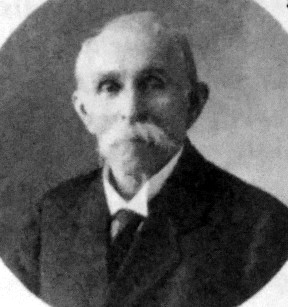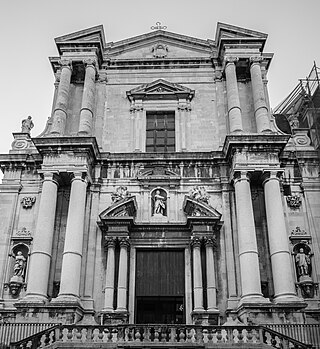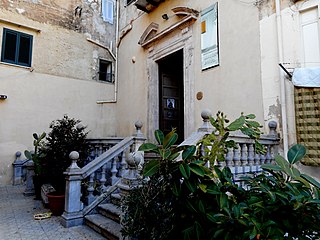
The Church of the Gesù is the mother church of the Society of Jesus (Jesuits), a Catholic religious order. Officially named Chiesa del Santissimo Nome di Gesù all'Argentina, its façade is "the first truly baroque façade", introducing the baroque style into architecture. The church served as a model for innumerable Jesuit churches all over the world, especially in the Americas. Its paintings in the nave, crossing, and side chapels became models for Jesuit churches throughout Italy and Europe, as well as those of other orders. The Church of the Gesù is located in the Piazza del Gesù in Rome.

The Church of Saint Andrew on the Quirinal is a Roman Catholic titular church in Rome, Italy, built for the Jesuit seminary on the Quirinal Hill.

Stanisław Kostka S.J. was a Polish novice of the Society of Jesus. He is venerated in the Catholic Church as Saint Stanislaus Kostka.

Giacomo Serpotta was an Italian sculptor, active in a Rococo style and mainly working in stucco.

The Church of the Gesù, known also as the Saint Mary of Jesus or the Casa Professa, is a Baroque-style, Roman Catholic church established under the patronage of the Jesuit order, and located at Piazza Casa Professa 21 in Palermo, region of Sicily, Italy.

Natale Masuccio, also known as Mesuccio or Tomasucci, was an Italian architect and Jesuit. He is regarded as one of the most important architects in Sicily during the transition between Mannerism and Baroque.

San Bartolomeo is a Baroque church in Modena.
San Pietro is a Roman Catholic church in central Piacenza, Emilia Romagna, Italy. The church was built over the site of an ancient church titled San Pietro in Foro.

The Church of Saint Mary of Pity is a Baroque church of Palermo. It is located at the corner of Via Alloro and Via Torremuzza in the quarter of the Kalsa, within the historic centre of Palermo.

The Church of Saint Ursula of the Blacks is a Baroque-style, Roman Catholic church located in the central Via Maqueda #110, adjacent to the Palazzo Comitini, in the quarter of the Albergaria, within the historic centre of Palermo, Region of Sicily, Italy.

Santa Caterina d'Alessandria or Saint Catherine of Alexandria is a Roman Catholic church with a main facade on Piazza Bellini, and a lateral Western facade facing the elaborate Fontana Pretoria, in the historic quarter of Kalsa in the city of Palermo, region of Sicily, Italy. In front of the main facade, across the piazza Bellini, rise the older churches of San Cataldo and Santa Maria dell'Ammiraglio, while across Piazza Pretoria is the Theatine church of San Giuseppe and the entrance to the Quattro Canti. Refurbished over the centuries, the church retains elements and decorations from the Renaissance, Baroque, and late-Baroque (Rococo) eras. This church is distinct from the Oratorio di Santa Caterina found in the Olivella neighborhood.

Pietro Maria Rocca was an Italian historian.

The Church of Most Holy Saviour is a Baroque-style, Roman Catholic church in Palermo, Italy. It is located at #396 of the ancient main street of Palermo, the Cassaro, presently Via Vittorio Emanuele, in the ancient Albergaria quarter.

San Francesco Borgia is a Roman Catholic church located on Via Crociferi #7, adjacent to the former Collegio Gesuita, and parallel to San Benedetto, and about a block south on Crociferi of the church and convent of San Giuliano, in the city of Catania, region of Sicily, southern Italy. The church is mainly used for exhibits, but still holds much of the original Jesuit artwork.

Sant'Agata al Collegio is a Roman Catholic church building at the end of Corso Umberto, intersection with via Re D'Italia, in the town of Caltanissetta, in the province of same name, Sicily.

The Italian: Chiesa della Madonna Assunta or the Church of the Virgin of the Assumption is a Baroque-style, Roman Catholic church located on Via Maqueda 59-61 in the ancient quarter of Kalsa in central Palermo, region of Sicily, Italy. It rises a block south along via Maqueda from the Palazzo Sant'Elia.

The Oratorio di San Mercurio is a Baroque chapel or prayer room located adjacent to the former Benedictine convent and church of San Giovanni degli Eremiti, in the quarter of the Albergaria, within the historic centre of Palermo, region of Sicily, Italy.

The Oratorio del Rosario di Santa Cita is a Baroque chapel or prayer room located in the quarter of the Castellamare within the historic center of Palermo, region of Sicily, Italy. The site is best known for the remarkable stucco tableaux scenes composed during 1687-1718 by Giacomo Serpotta.

The Oratory of Saint Catherine of Alexandria is a Baroque oratory located attached to the church of Sant'Ignazio all'Olivella, in the quarter of the Castellammare of Palermo, region of Sicily, Italy.

San Mattia ai Crociferi is a Baroque-style, deconsecrated church, located on Via Torremuza #18 in the Kalsa quarter of central of Palermo, region of Sicily, Italy. Just diagonal, and to the north is the church of Santa Maria della Pietà.



















